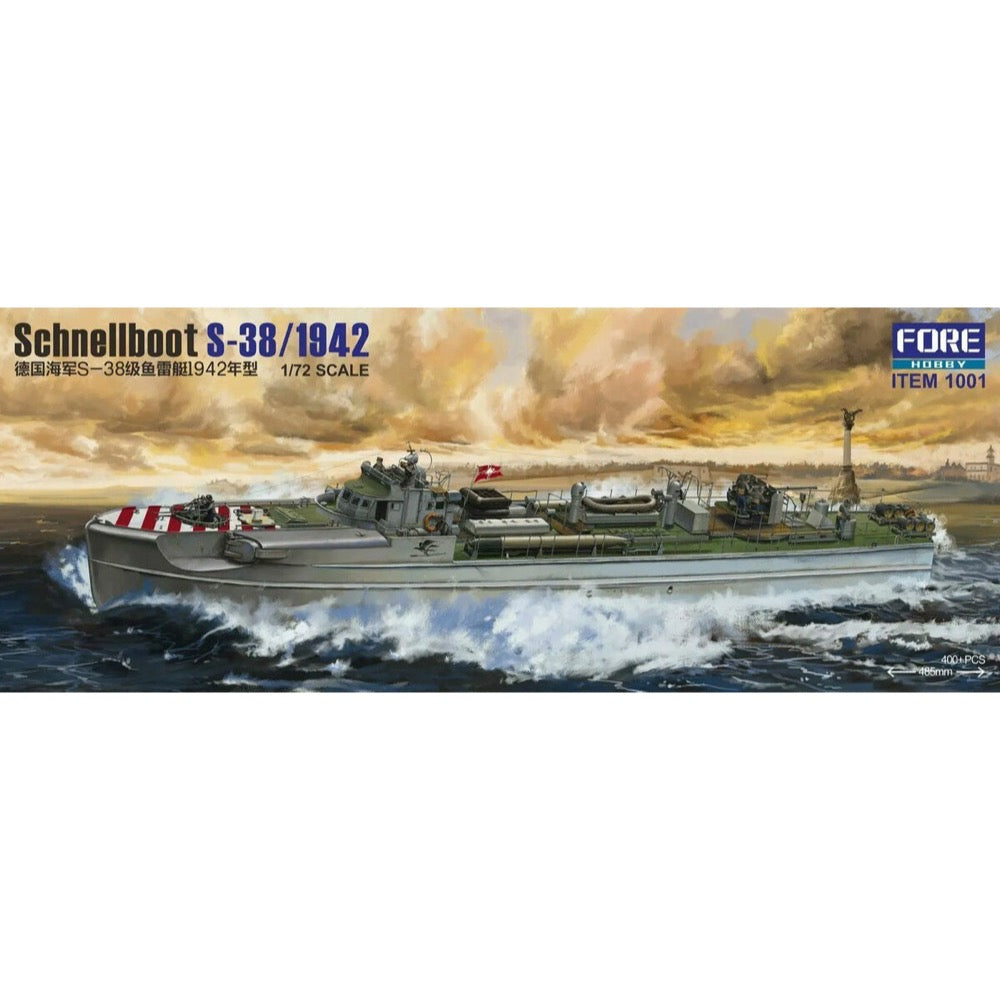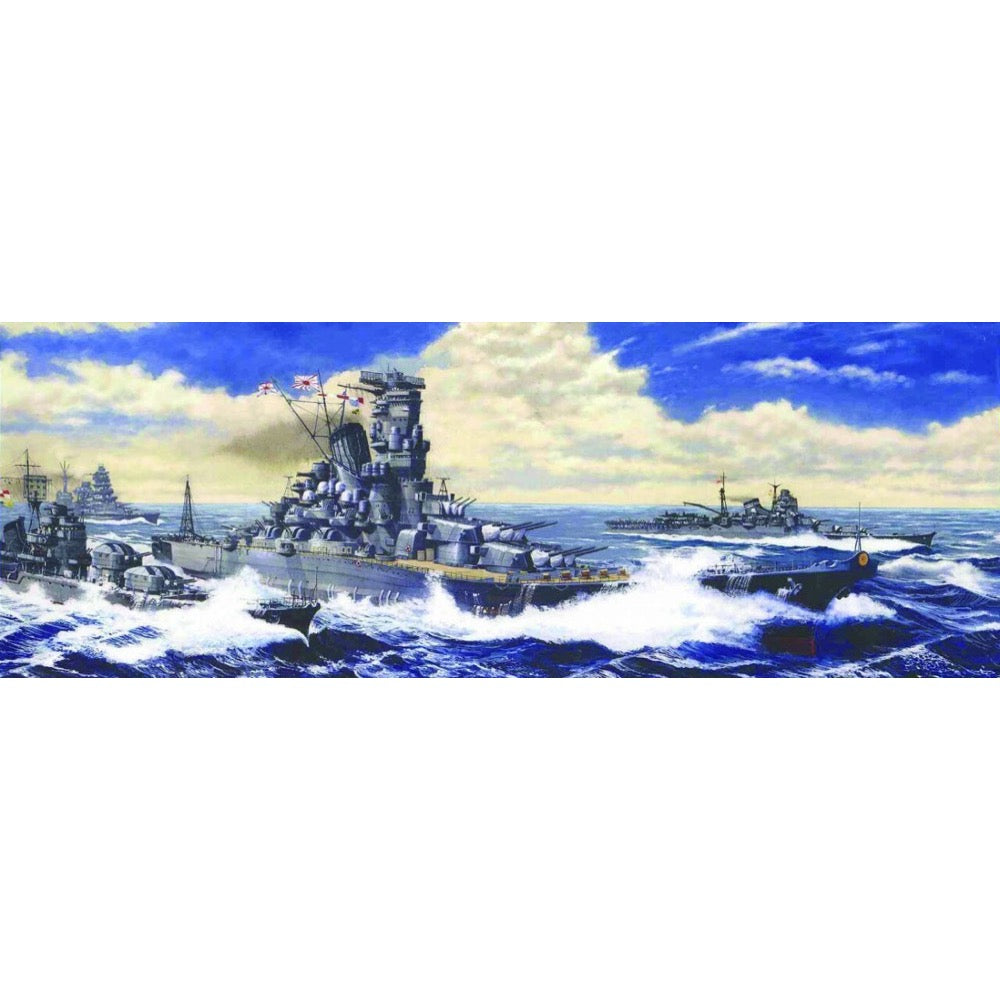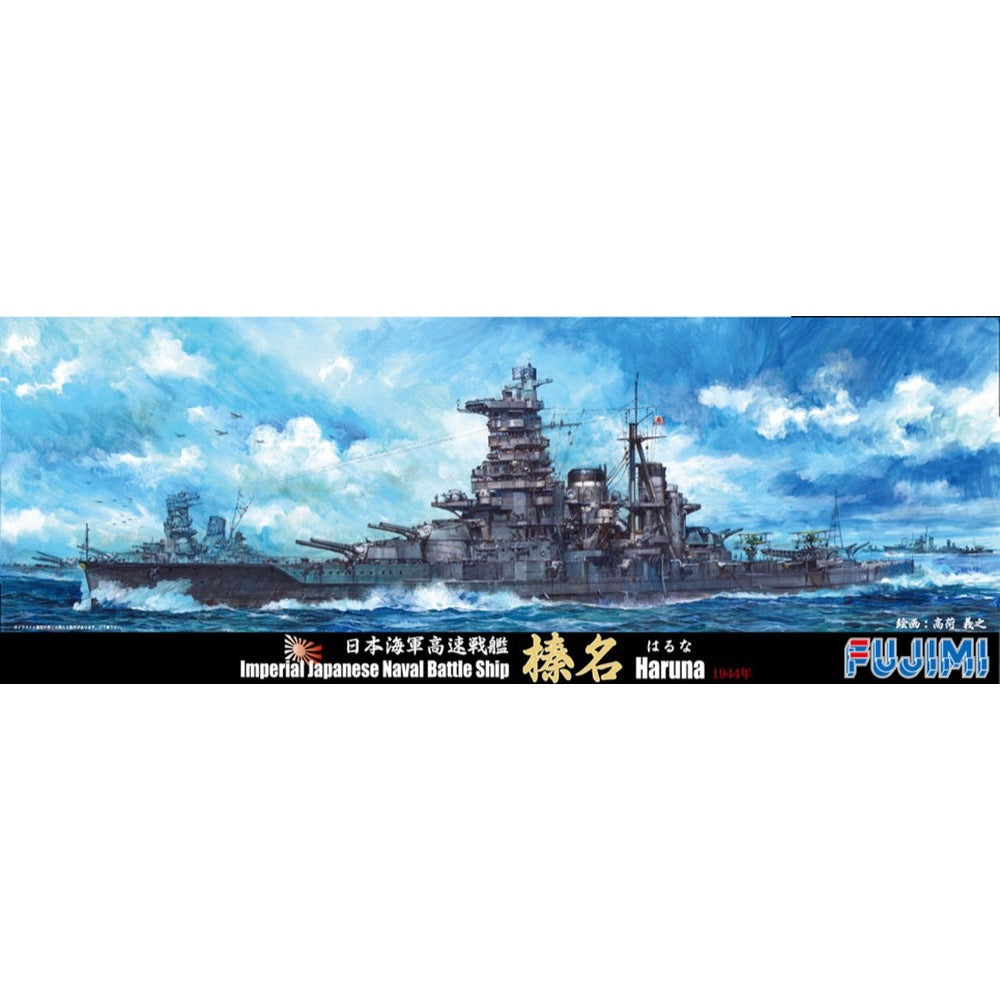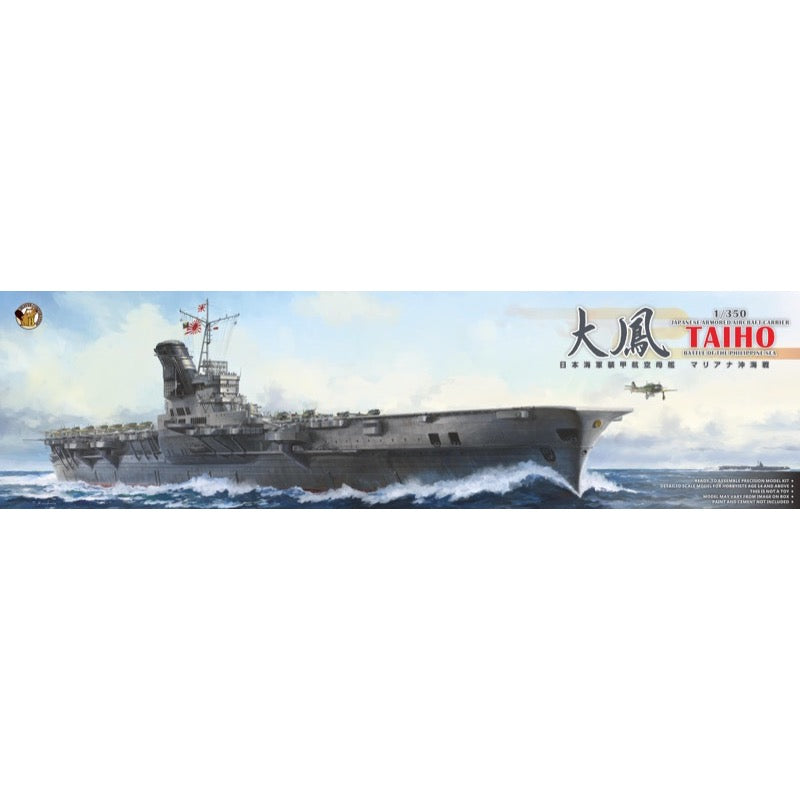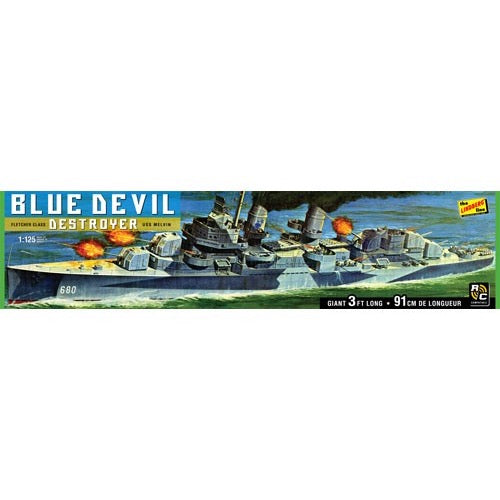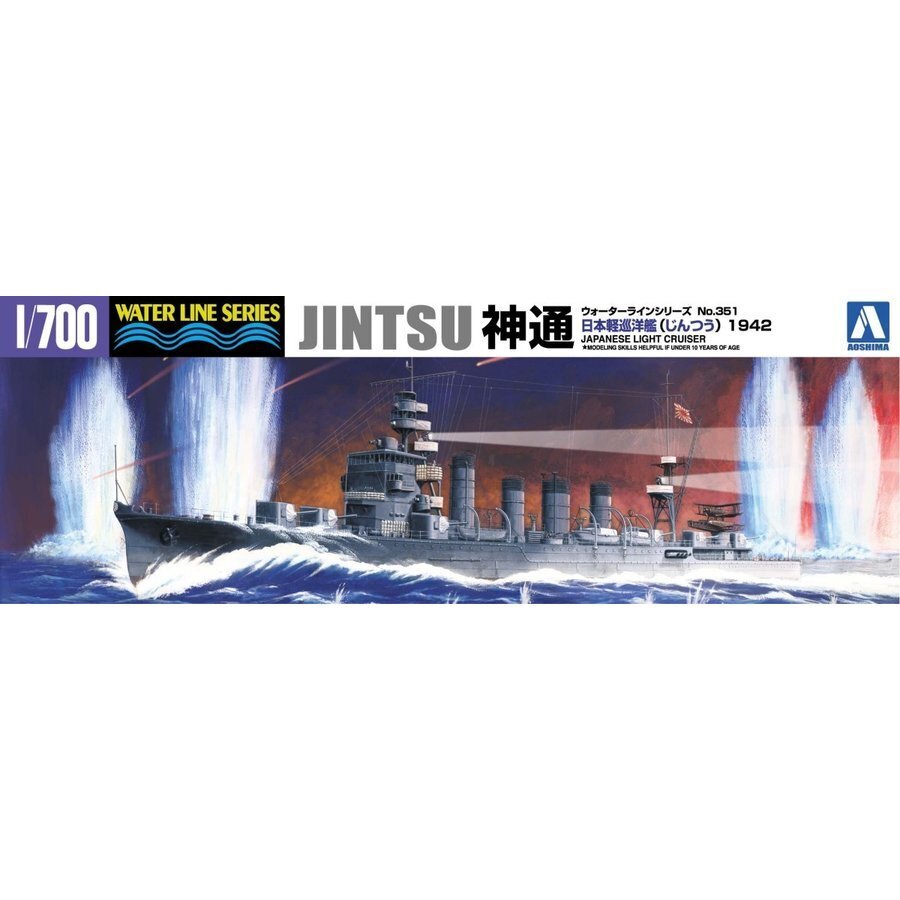
Aoshima A004009 1/700 IJN Light Cruiser Jintsu 1942
15.00
$
<p>Jintsu was a Japanese light cruiser the keel of which was laid in 1922, launched in December 1923, and commissioned in the Imperial Japanese Navy in July 1925. The ship was 152.4 m long, 14.2 m wide, and her displacement was 5,200 tons. Cruiser Jintsu's top speed was 35.3 knots. At the time of launching, the main armament was 7 140 mm guns in single positions, and the additional armament was, among others: 2 80 mm anti-aircraft guns and 8 610 mm torpedo tubes.</p>
<p>Jintsu was the second Sendai-class cruiser. Cruisers of this type were designed from the beginning as the so-called "Leaders" or guides of a destroyer flotilla. Therefore, when designing them, the emphasis was on high speed at the expense of armor. They were also very often the flagships of the light ships of the Japanese fleet. The combat career of cruiser Jintsu in World War II began in December 1941 with support for the Japanese landing in the Philippines. In February 1942, he took an active part in the Battle of the Java Sea, which ended with the full success of the Japanese forces. From the summer of 1942, he was involved in the fighting in the Guadalcanal area - most often as a ship protecting the convoys going to the island. In the course of the fighting, the Jintsu was badly damaged and was repaired until January 1943. In July of that year, he took part in the Battle of Colombangara in the Solomon Islands archipelago, where he was sunk on July 13, 1943.</p>
<p>This is the first appearance of the four-stacked Sendai-class light cruiser Jintsu in the Waterline Series. In order to accurately replicate the distinctive spoon-shaped bow of the Sendai-class cruisers, a separate hull mold was created. The latest data was also used in creating this model, for the utmost in authenticity. Depicts the Jintsu, the second of the Sendai-class cruisers, as she appeared in 1942 during the Solomon Islands Campaign (she was later sunk by Allied destroyers in July 1943 at the Battle of Kolombangara). As the series name indicates, this is a waterline kit.</p>
<p>This is an injection-plastic ship model kit.</p>
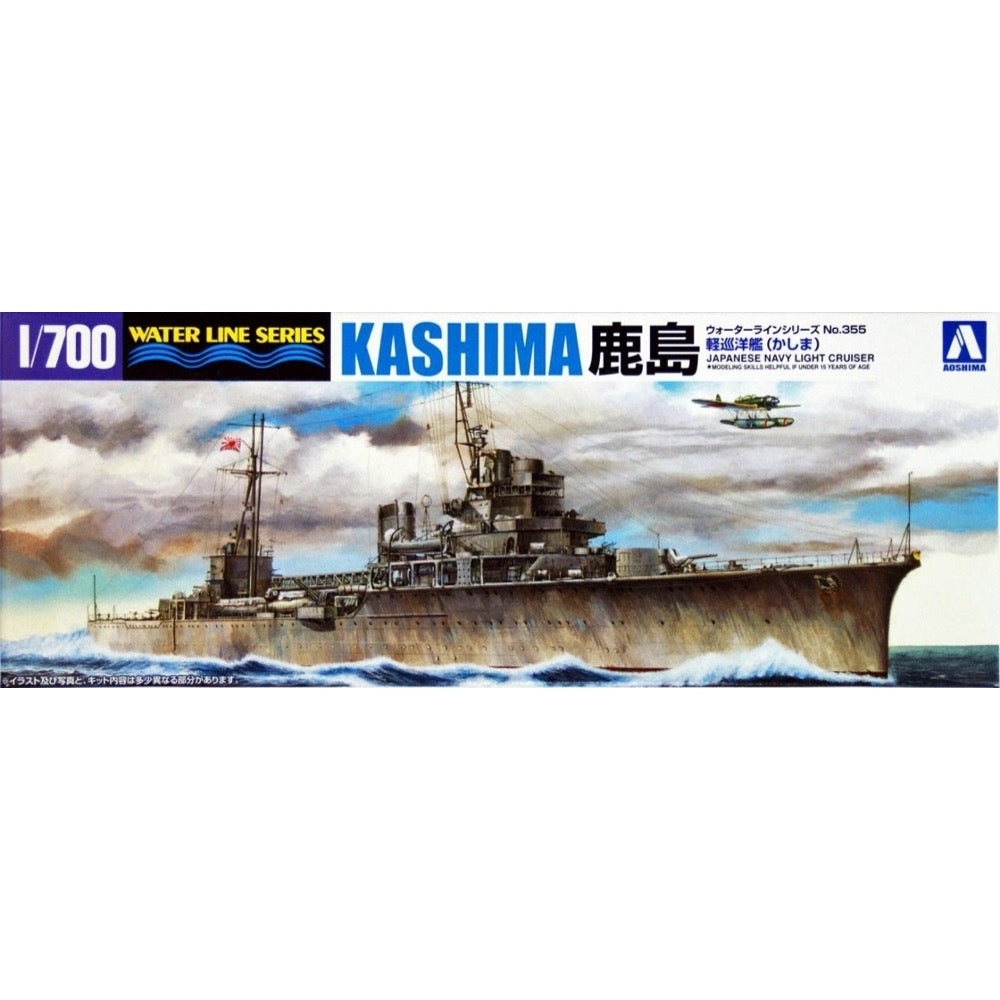
Aoshima A004542 1/700 I.J.N. Light Cruiser Kashima
17.00
$
<p>Kashima was a Japanese light cruiser the keel of which was laid in 1938, launched in September 1939, and entered service with the Imperial Japanese Navy in May 1940. The length of the ship was 130 m, width 15.9 m, and a full displacement - 7,100 tons. Cruiser Kashima's maximum speed was only 18 knots. The main armament was 4 140 mm guns in two turrets, two cannons each, and the additional armament was, among others: two 127 mm guns and two twin 533 mm torpedo tubes.</p>
<p>Kashima was the second Katori-class cruiser in succession. Originally, at the time of ordering, these types of units were planned as training ships, but during the Pacific War, they were adapted as light cruisers and performed various auxiliary functions in the Japanese fleet. The career of cruiser Kashima during World War II began in January 1942, when the unit supported the Japanese landing on Rabaul. In May 1942, she took part in Operation MO, i.e. the landing of Japanese troops in New Guinea, which prevented her from taking part in the Battle of the Coral Sea. In 1944, the unit performed primarily transport functions, including: transporting Japanese soldiers to Okinawa and Taiwan. At the end of 1944, Kashima underwent a thorough modernization, which significantly increased its potential for ZOP (Fighting Submarines) activities. In light of this, it is not surprising that Kashima has been on anti-submarine patrol in the South China Sea since February 1945. After the war, the cruiser was taken over by the Americans and served as a transport unit, and by July 1947 the ship was scrapped.</p>
<p>A detailed waterline kit of the IJN's Kashima. Represents the late war configuration with more complex masts, additional AA batteries, and lack of torpedo tubes. </p>
<p>This is an injection-plastic ship model kit.</p>
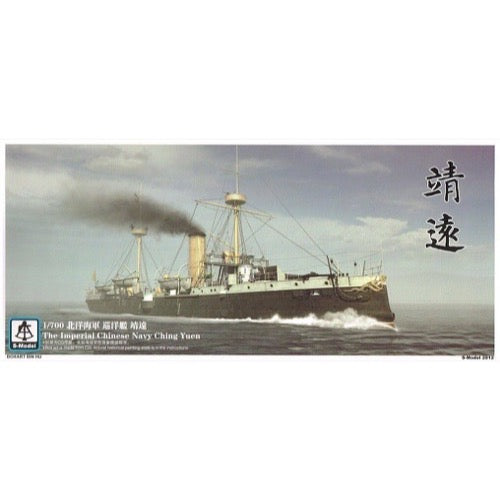
HAT 00006 1/700 Chinese Navy Ching Yuen
15.00
$
<h3>Chinese cruiser Jingyuan (1887)</h3>
<p>Jingyuan was an armored cruiser in the late Qing Dynasty Beiyang Fleet. Her sister ship was Laiyuan.</p>
<h3>Includes:</h3>
<ul>
<li>3 frames with details</li>
<li>decal (sticker)</li>
<li>3 photo-etching</li>
<li>coloring scheme for model</li>
<li>detailed instructions in English</li>
<li>Glue, paint not included</li>
</ul>
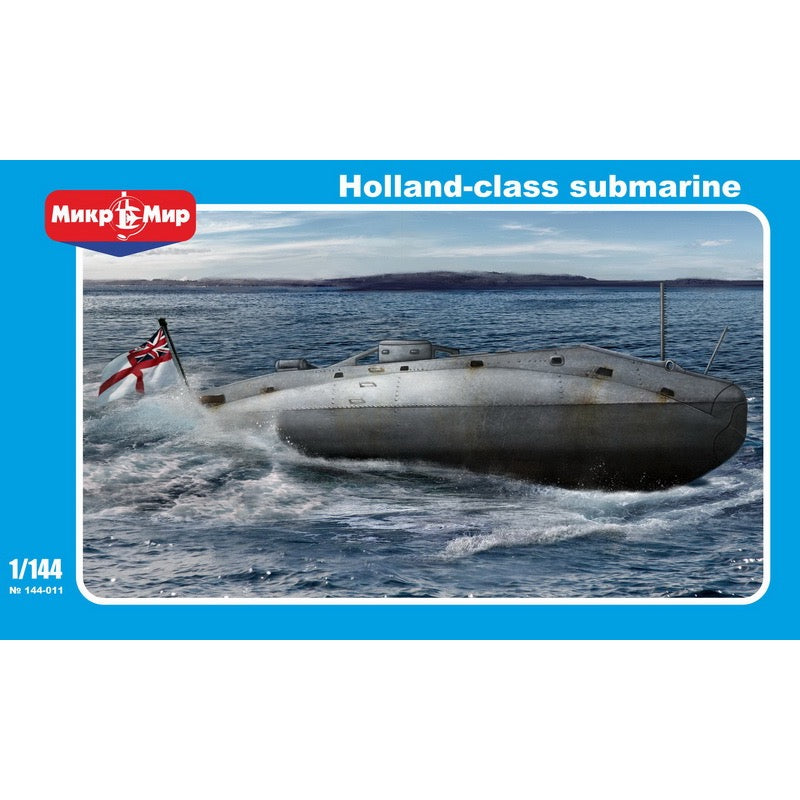
Mikro-Mir 144-011 1/144 HMS Holland-class
23.00
$
<p>Holland 1 (or HM submarine Torpedo Boat No 1) was the first submarine commissioned by the Royal Navy, the first in a six-boat batch of the Holland-class submarine.</p>
<p>In 1901 it was ordered from John Philip Holland and built at Barrow-in-Furness. In order to keep the boat's construction secret, it was assembled in a building labeled "Yacht Shed", and the parts that had to be fabricated in the general yard were marked for "pontoon no 1". The boat was launched on 2 October 1901 and dived for the first time (in an enclosed basin) on 20 March 1902. Sea trials began in April 1902.</p>
<p>In September 1902 it arrived at Portsmouth with the other completed Holland boat and along with HMS Hazard (their floating submarine base) made up the "First Submarine Flotilla", commanded by Captain Reginald Bacon.</p>
<p>The 'Holland Class' was the first submarine to enter service with the Royal Navy. They had a complement of 2 officers and 5 ratings, often another rating was carried for training purposes. These submarines were petrol driven which proved to be rather hazardous. There were no interior bulkheads in these boats, very little ventilation and even less in the way of accommodation. No sleeping facilities or toilets, this consisted of a bucket which was emptied on surfacing.</p>
<p>Although by today's standards these boats were of a very basic design, lessons were learned and difficulties overcome, they were efficient, easily controlled when dived and no crew members were lost. Due to their low profile they were at their best in calm seas. On the whole they were a success.</p>
<p>On 24 October 1904, with the rest of the Holland fleet and three A-class boats, Holland 1 sailed from Portsmouth to attack a Russian fleet that had mistakenly sunk a number of British fishing vessels in the North Sea in the Dogger Bank incident. The boats were recalled before any attack could take place.</p>
<p>The submarine was decommissioned and sold in 1913 to T W Ward (limited) for £410. By the time the submarine was sold she was considered so obsolete that she was sold with all fittings intact, and the only requirement put on the purchaser was that the torpedo tube be put out of action.</p>
<p>While being towed to the scrapyard Holland 1 encountered very severe weather and sank about a mile and a half off Eddystone lighthouse. No one was on board the submarine at the time, and, since the submarine had been seen to be sinking earlier in the journey, the crew of the tug were ready to release the tow rope, preventing any damage to the tug.</p>
<p>The wreck was located in 1981 by Plymouth historian Michael Pearn and in November 1982 it was raised. From 1983, after coating in anti-corrosion chemicals, it was displayed at the Royal Navy Submarine Museum. Work on restoring the submarine continued until September 1988. However by 1993 it was apparent that the treatment had proved inadequate. A fibreglass tank was built around her, and it was immersed in sodium carbonate solution from 1995. After four years the corrosive chloride ions had been removed, and the boat was able to be displayed again after restoration work.</p>
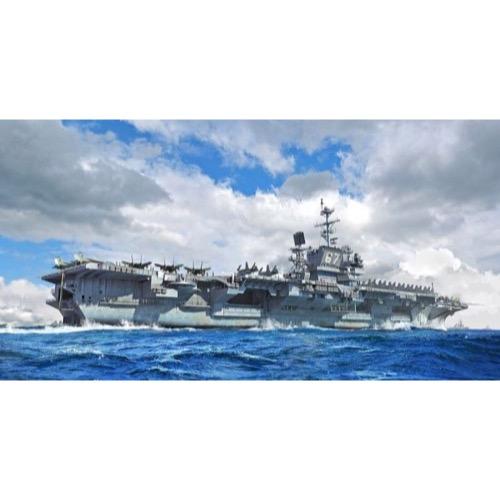
Trumpeter 06716 1/700 USS John F. Kennedy CV-67
52.00
$
<p>CV-67 USS John F. Kennedy was named for the 35th President of theUnited States. She was number 4 in the Kitty Hawk Class of Aircraft Carriers. She was also the last of the conventionally powered Aircraft Carrier although she was originally intended to be Nuclear Powered. CV-67 differed from other “Kitty Hawk” class carriers with a modified outward inclined funnels and being 17 feet shorter.</p>
<p>CV-67 USS JFK Kennedy was commissioned in Sept 7th, 1968 and was stationed in theMediterranean Sea. She was also involved in an unfortunate incidents where she collided with USS Belknap in 1975 and USS Bordelon in 1976.</p>
<p>The “Big John” saw combat during the Lebanon crisis in 1983 and her F-14 engaged and successfully shot down 2 Libyan mig-23 that show threat and aggression. Saw combat again in 1991 during “Operation Desert Storm” with 114 airstrikes and 2,900 sorties against Iraq.</p>
<p>After serving the country for over, 30 years, USS John F, Kennedy decommissioned in Mayport, Flordia. She arrived naval Inactive Ship Maintenance Facility and remain in the U.S. Navy Reserve Fleet.</p>
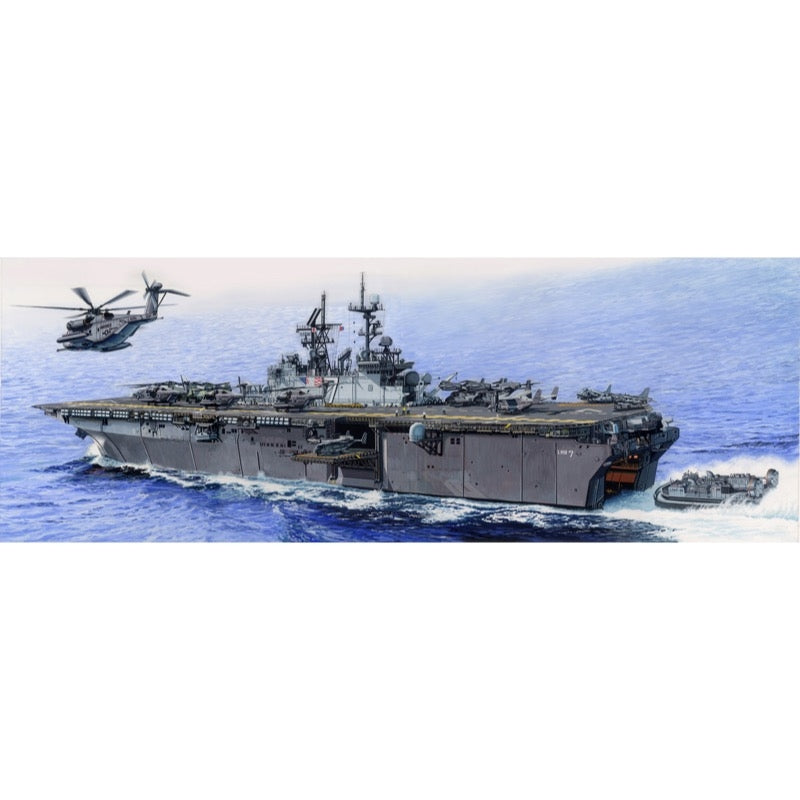
Trumpeter 05615 1/350 USS Iwo Jima LHD-7
104.00
$
<p>"Iwo Jima" is the 2001 shares of labor in the United States Navy large-deck amphibious assault ship (LHD). The ship built by the Ingalls Shipyard, is the seventh ship of the Wasp class amphibious assault ships. "Iwo Jima" was a displacement of 40,500 tons, containing members of the 3200. The ship will join the U.S. Atlantic Fleet. As the U.S. Navy and Marine Corps amphibious readiness forces large deck assault ship, LHD carrying, transportation, deployment and command support for the Marine Corps Expeditionary Force. The ship can provide a full amphibious assault, transportation, advance force and special operations functions. </p>


